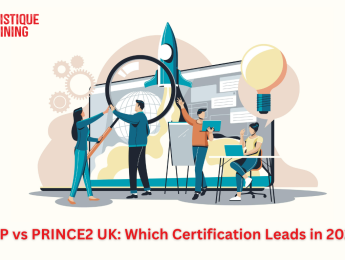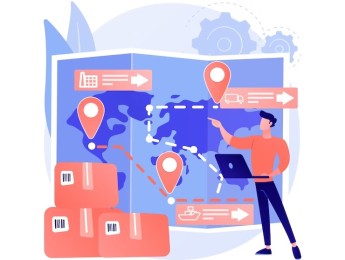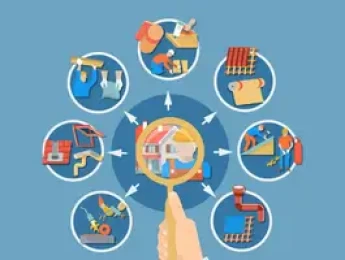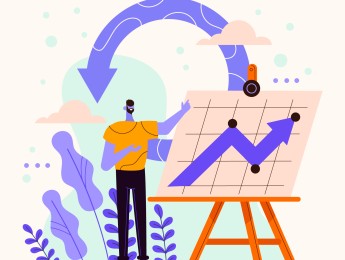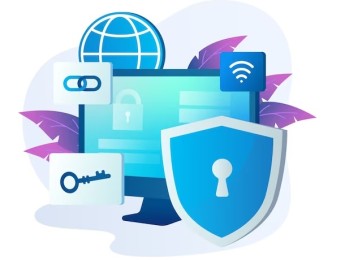- Table of Contents
- Introduction
- What Is Toxic Productivity?
- What Causes Toxic Productivity?
- 1. Cultural and Societal Pressures
- 2. Fear of Failure
- 3. Comparison and Competition
- 4. Workplace Expectations
- 5. Perceived Self-Worth
- 6. Lack of Education on Mental Health
- 7. Unrealistic Workload Expectations
- How to Avoid Toxic Productivity
- 1. Recognise Your Self-Worth Beyond Productivity
- 2. Set Realistic Goals
- 3. Practice Self-Compassion
- 4. Establish Work-Life Boundaries
- 5. Embrace Mindful Productivity
- 6. Cultivate a Support Network
- 7. Practice Self-Reflection
- 8. Nurture Hobbies and Creative Pursuits
- 9. Seek Professional Help if Needed
- Productivity During the COVID-19 Pandemic
- Remote Work and Increased Flexibility
- Technology and Tools Enhancing Collaboration
- Challenges and the Blurring Lines Between Work and Personal Life
- Productivity Statistics and Insights
- The Role of Mental Health Support
- The Role of Technology in Shaping Productivity
- Streamlining Communication and Collaboration
- Task and Project Management Platforms
- Automation and Artificial Intelligence
- Remote Work Facilitation
- Challenges of Digital Overload
- Balancing Technology and Well-Being
- The Importance of Rest and Creativity in Productivity
- Rest and Cognitive Renewal
- Creativity as a Catalyst for Innovation
- Rest as a Fuel for Physical Health
- Balancing Activity with Relaxation
- Encouraging a Creative Work Environment
- Holistic Wellness and Productivity
- Conclusion
Introduction
In our fast-paced and achievement-oriented society, productivity is often seen as a virtue. We are constantly bombarded with messages about the importance of working hard, hustling, and maximising our output. While productivity can be beneficial and lead to personal and professional growth, there is a darker side to it that often goes unnoticed—toxic productivity. In this blog post, we will delve into toxic productivity, its causes, signs to watch out for, and practical steps to avoid falling into its trap.
What Is Toxic Productivity?
Toxic productivity refers to the unhealthy obsession with productivity and constant pressure to be productive at all costs. It is the belief that one's self-worth is tied solely to their ability to produce and achieve results. In a toxic productivity mindset, rest, leisure, and self-care are seen as indulgences or even signs of laziness, leading individuals to neglect their physical and mental well-being.
What Causes Toxic Productivity?
Toxic productivity doesn’t emerge in a vacuum; it's nurtured by various societal and individual factors, creating a perfect storm that engulfs individuals in an unrelenting cycle of overwork and burnout.
1. Cultural and Societal Pressures
In today’s society, glorifying the "hustle culture" is pervasive. Success stories of burning the midnight oil, working weekends, and sacrificing personal lives for professional gains are often hailed as heroic. The media exacerbates this narrative, especially social media platforms, showcasing a curated version of people's lives where hard work and achievements take centre stage. Consequently, individuals are constantly pressured to measure up to these unrealistic standards. The cultural expectation of being constantly productive contributes significantly to the toxic mindset.
2. Fear of Failure
The fear of failure is a potent driving force behind toxic productivity. In a world that often equates success with worth, the dread of falling short creates a perpetual cycle of overcompensation. People fear that any pause in their productivity will lead to them lagging behind, losing opportunities, or being deemed inadequate. This fear can stem from childhood experiences, societal expectations, or even workplace pressures, pushing individuals to push themselves to the brink relentlessly.
3. Comparison and Competition
The rise of social media platforms has given individuals unprecedented access to the lives of others. While this connectivity can be enriching, it often fosters unhealthy comparisons. People only showcase their successes and milestones, creating an illusion of perpetual achievement. Continuous exposure to others' apparent triumphs leads to self-doubt and a relentless drive to outdo others, feeding the toxic productivity cycle. The fear of being left behind in this competitive race further fuels the obsession with constant productivity.
4. Workplace Expectations
Workplaces can inadvertently nurture toxic productivity through unclear expectations and an overworked culture. Employers, consciously or not, may reward overworking, creating an environment where employees feel compelled to clock in long hours, often at the expense of their well-being. In industries where deadlines and quotas are paramount, the pressure to meet or exceed these benchmarks can lead to an obsession with productivity, overshadowing the need for balance and self-care.
5. Perceived Self-Worth
Many individuals tie their self-worth exclusively to their productivity and achievements. In such cases, any dip in productivity is seen as a personal failure, leading to immense stress and pressure to outperform constantly, ultimately lowering one’s self-esteem. In fact, research has unveiled a positive connection between self-esteem levels and productivity outcomes. This internalised belief system, often stemming from childhood conditioning or past failures, exacerbates the toxic productivity mindset.
6. Lack of Education on Mental Health
The importance of mental health in relation to productivity is a relatively recent conversation. In societies where mental health education and awareness are lacking, individuals might not recognise the signs of burnout or stress until it’s too late. This lack of awareness prevents them from seeking help, perpetuating the toxic cycle.
7. Unrealistic Workload Expectations
In some cases, employers might place unrealistic demands on their employees due to a lack of understanding about sustainable workloads or an urgent need to meet business objectives. This constant pressure to meet unachievable targets can lead to burnout and contribute to toxic productivity.
In summary, toxic productivity is a complex interplay of societal expectations, internal fears, workplace dynamics, and individual self-worth. Breaking free from this cycle requires personal awareness and societal and organisational changes that prioritise well-being and redefine the definition of success away from mere productivity.
How to Avoid Toxic Productivity
Escaping the clutches of toxic productivity demands a conscious effort to redefine the relationship between work and productivity. It involves reshaping beliefs, setting boundaries, and prioritising well-being. Here’s a comprehensive guide on how to break free from this harmful cycle:
1. Recognise Your Self-Worth Beyond Productivity
Understanding that your value extends far beyond your productivity is foundational. Your worth is not solely determined by the number of tasks you complete or the hours you put in. Embrace the concept that you are valuable inherently, irrespective of your output. Self-acceptance is the cornerstone of a healthier mindset.
2. Set Realistic Goals
Setting attainable, well-defined goals is key. Break down your objectives into smaller tasks, allowing for a sense of accomplishment without overwhelming yourself. You build confidence and prevent burnout from unattainable targets by achieving realistic milestones.
3. Practice Self-Compassion
Be gentle with yourself. Understand that it’s okay to make mistakes and experience setbacks. Instead of harsh self-criticism, offer yourself understanding and support. Treat yourself with the same kindness you would offer a close friend. Self-compassion provides the emotional resilience to face challenges without undue stress.
4. Establish Work-Life Boundaries
Set clear boundaries between work and personal life, especially if you work remotely. According to Asana’s research, 37% of their knowledge workers who work remotely report not having a clear start or finish time for their workdays. If you feel the same, you should establish boundaries with your employer. Don’t forget also to prioritise self-care activities, hobbies, and relationships, and avoid bringing work-related stress into your personal space.
5. Embrace Mindful Productivity
Mindfulness techniques, such as meditation and deep breathing exercises, can enhance focus and reduce stress. Incorporate these practices into your routine, enabling you to approach tasks with a clear mind and heightened awareness. Mindful productivity emphasises the quality of work over quantity, encouraging a deeper connection with your tasks.
6. Cultivate a Support Network
Surround yourself with individuals who understand the importance of balance. Seek out friends, family, or colleagues who prioritise well-being. Engage in conversations about work-life balance and share experiences. Additionally, consider seeking mentorship from someone who has successfully navigated the challenges of toxic productivity. A supportive network provides encouragement and valuable insights.
7. Practice Self-Reflection
Regularly evaluate your relationship with productivity. Ask yourself pertinent questions: Are you pushing yourself excessively? Are you neglecting your well-being? Reflecting on these aspects enables you to identify patterns and make necessary adjustments. Journaling your thoughts and emotions can be a helpful tool for self-reflection.
8. Nurture Hobbies and Creative Pursuits
Engage in activities that bring you joy and fulfilment outside of work. Pursue hobbies, whether it’s painting, gardening, writing, or playing a musical instrument. Creative outlets provide relaxation and stimulate your mind, fostering innovative thinking. Balancing work with activities that bring you genuine happiness enhances overall life satisfaction.
9. Seek Professional Help if Needed
If you find it challenging to break free from the toxic productivity cycle alone, don’t hesitate to seek professional help. A therapist or counsellor can provide tailored strategies and support to help you navigate the complexities of stress, burnout, and self-worth.
Breaking free from toxic productivity requires a shift in mindset, conscious choices, and a commitment to self-care. By embracing these strategies, individuals can reclaim their lives from the grips of constant busyness and find fulfilment in their personal and professional endeavours. Remember, productivity is most meaningful when it aligns with one's well-being and happiness.
Productivity During the COVID-19 Pandemic
The COVID-19 pandemic brought about unprecedented changes in the way people work, leading to significant shifts in productivity dynamics. As companies worldwide implemented remote work policies to curb the virus's spread, employees adapted to new work environments, ushering in both challenges and opportunities in terms of productivity.
Remote Work and Increased Flexibility
Remote work became the norm for many professionals, eliminating the daily commute and allowing employees to customise their work environments. This newfound flexibility led to increased productivity for some individuals. Without the distractions of a bustling office, employees often found themselves able to concentrate better, resulting in improved efficiency.
Technology and Tools Enhancing Collaboration
The pandemic accelerated the adoption of digital tools and technologies designed to facilitate remote collaboration. Video conferencing platforms, project management software, and communication tools became essential in maintaining workflow and ensuring team connectivity. These tools not only streamlined communication but also enhanced collaboration among team members, leading to more efficient project management and task execution.
Challenges and the Blurring Lines Between Work and Personal Life
However, the pandemic-induced shift to remote work also presented challenges. The boundaries between work and personal life are blurred, making it difficult for individuals to "clock out" at the end of the day. With the office now in their homes, many employees found it hard to disconnect, leading to longer work hours and increased stress. This blurring of lines emphasised the need for establishing clear work-life boundaries, as discussed in the previous section.
Productivity Statistics and Insights
Research conducted during the pandemic provided valuable insights into the changing productivity landscape. Prodoscore's study, for instance, revealed a notable 5% increase in productivity among its users between August 2019 and August 2020. This data underscored the adaptability of individuals in the face of adversity, showcasing their ability to maintain productivity even in challenging circumstances. However, this heightened productivity often came at the cost of a 42% increase in the number of employees working on weekends, according to Hive, highlighting the importance of maintaining a healthy work-life balance even in remote settings.
The Role of Mental Health Support
With the pandemic-induced stressors, mental health became a central concern. Many companies recognise the importance of supporting their employees' well-being, implementing mental health initiatives and offering resources such as counselling services and stress management workshops. Acknowledging the connection between mental health and productivity, these initiatives aimed to alleviate the psychological burdens caused by the pandemic, ensuring employees felt supported and valued beyond their work output.
The COVID-19 pandemic reshaped the way people perceive productivity and work-life balance. While remote work brought newfound flexibility and efficiency, it also highlighted the importance of maintaining boundaries to prevent burnout and exhaustion. The pandemic emphasised the need for a holistic approach to productivity, which considers mental and emotional well-being integral to a successful and sustainable work life.
In this evolving landscape, the lessons learned during the pandemic underscore the importance of balancing productivity with self-care and mental health support. By embracing a comprehensive approach to well-being, individuals can navigate the challenges of remote work and maintain a healthy work-life balance, ensuring their productivity remains sustainable in the long run.
The Role of Technology in Shaping Productivity
Technology is a transformative force in the ever-evolving productivity landscape, shaping how we work, collaborate, and manage tasks. Technology has revolutionised how we approach productivity, from sophisticated project management platforms to intuitive communication tools. However, while these advancements offer immense potential, they also come with challenges and responsibilities.
Streamlining Communication and Collaboration
Digital communication tools like Slack, Microsoft Teams, and Zoom have redefined collaboration. They enable real-time discussions, virtual meetings, and file sharing, enhancing team connectivity irrespective of geographical location. These platforms foster efficient communication, breaking down barriers and ensuring that ideas flow seamlessly across teams.
Task and Project Management Platforms
Task management tools like Asana, Trello, and Jira have revolutionised project planning. They allow for creating detailed task lists, deadlines, and progress tracking. These platforms promote transparency, ensuring everyone is on the same page regarding project milestones and responsibilities. The visual nature of these tools simplifies complex projects, enhancing productivity by promoting a clear understanding of goals and timelines.
Automation and Artificial Intelligence
Automation tools and artificial intelligence (AI) have streamlined repetitive tasks. From automating email responses to data analysis, these technologies reduce the time spent on mundane activities, allowing individuals to focus on more strategic and creative aspects of their work. AI algorithms can analyse patterns, predict trends, and provide valuable insights, aiding in informed decision-making and optimising workflow efficiency.
Remote Work Facilitation
Technology has significantly facilitated the rise of remote work. Cloud-based applications and secure networks enable employees to access work files and collaborate with team members from anywhere with an internet connection. Remote desktop solutions ensure a seamless work experience, blurring the lines between office and home, promoting flexibility, and potentially increasing productivity for individuals who thrive in remote environments.
Challenges of Digital Overload
However, the prevalence of technology also introduces challenges. Constant notifications, emails, and messages can lead to digital overload, creating a sense of urgency that may contribute to stress and burnout. Although facilitated by technology, the expectation of constant availability can blur the lines between work and personal time, impacting overall well-being.
Balancing Technology and Well-Being
The key lies in striking a balance. While technology enhances productivity, it is crucial to establish boundaries. Setting designated times for checking emails, turning off non-essential notifications during personal hours, and encouraging digital detoxes can mitigate the negative effects of constant connectivity. Employing technology mindfully ensures that it remains a tool for productivity, not a source of overwhelming stress.
In this digital age, technology continues to redefine productivity paradigms. Harnessing its power judiciously, combined with conscious efforts to maintain a healthy work-life balance, empowers individuals and organisations to achieve remarkable feats without sacrificing well-being.
The Importance of Rest and Creativity in Productivity
In our quest for productivity, we often overlook two vital elements pivotal in enhancing our efficiency and creativity: rest and creative expression. Understanding their profound impact can redefine how we approach work and contribute significantly to our overall productivity.
Rest and Cognitive Renewal
Rest is not merely the absence of work; it is an active process vital for cognitive renewal. During rest periods, especially during quality sleep, our brains consolidate memories, process information, and solve complex problems. Adequate rest ensures that we wake up refreshed, alert, and ready to tackle challenges. On the other hand, lack of sleep impairs cognitive functions, diminishing focus, decision-making abilities, and overall productivity. Embracing rest as an essential component of productivity is not laziness; it’s a strategic investment in our mental faculties.
Creativity as a Catalyst for Innovation
Creative expression is a potent catalyst for innovation and problem-solving. Engaging in creative activities such as painting, writing, or playing musical instruments stimulates neural pathways, fostering innovative thinking. Creative pursuits break the monotony of routine tasks, allowing the mind to explore uncharted territories. Many groundbreaking ideas have emerged during moments of creative flow, making it a valuable asset in any professional endeavour. Encouraging employees to explore their creative sides can lead to a surge in inventive solutions and fresh perspectives in the workplace.
Creative Activity | Impact on Productivity | Benefits |
Painting | Enhances problem-solving skills | Stress reduction, enhanced focus |
Writing | Stimulates innovative thinking | Improved communication, mental clarity |
Music Instrumentation | Encourages creative problem-solving | Stress relief, improved mood |
Crafting | Boosts attention to detail | Enhanced fine motor skills, relaxation |
Cooking | Fosters innovation in flavours | Mindfulness, enjoyment, culinary skills |
Table 1: The impact of creative expression
Rest as a Fuel for Physical Health
Rest rejuvenates the mind and is equally crucial for physical health. Quality sleep supports the immune system, regulates hormones, and aids muscle recovery. Chronic sleep deprivation, conversely, weakens the immune system, disrupts metabolic functions, and increases the risk of various health issues. A well-rested body is more resilient, ensuring that we can sustain high productivity levels over the long term.
Balancing Activity with Relaxation
Productivity isn’t about perpetual activity but about a harmonious balance between effort and relaxation. The human body and mind operate optimally when they alternate between focused, high-energy activities and moments of relaxation. Incorporating short breaks, relaxation exercises, or even short naps during the day can reinvigorate the mind, enhancing concentration and creativity upon return to work tasks.
Encouraging a Creative Work Environment
Fostering creativity in the workplace involves more than just individual creative pursuits. It extends to the overall work environment. Encourage brainstorming sessions, create collaborative spaces, and celebrate diverse perspectives. A workplace that values and nurtures creativity becomes a breeding ground for innovative ideas and heightened productivity.
Holistic Wellness and Productivity
Incorporating rest and creativity into our lives isn’t a luxury; it’s a necessity for holistic wellness and sustained productivity. Recognising the intricate connection between these elements allows us to approach productivity more balanced and sustainably. As individuals and organisations prioritise rest and creativity, they create an environment where innovation thrives, well-being is safeguarded, and productivity becomes a natural outcome.
Understanding the intricate interplay of rest, creativity, and productivity empowers us to redefine our approach to work. By honouring the need for rest, embracing creative expression, and fostering a supportive environment, we enhance our productivity and create a fulfilling, balanced, and innovative way of living and working.
Conclusion
In our fast-paced world, productivity often becomes a measure of our worth. However, as we've explored, this pursuit can turn toxic, leading to burnout and a diminished sense of well-being. Recognising the signs and understanding the root causes of toxic productivity is the first step towards a more balanced and fulfilling life.
Embracing a holistic approach to productivity means valuing output, rest, self-care, and personal connections. Remember, your self-worth is not solely tied to your achievements; it encompasses your overall happiness and sense of fulfilment.
Unlock Your Potential with Effective Task & Time Management Course
Ready to break free from toxic productivity and enhance your life? Our ‘Effective Task and Time Management’ course offers actionable strategies, personalised guidance, and valuable insights to help you achieve your goals without sacrificing your well-being. Join now to discover the secrets of maximising productivity while ensuring a healthy work-life balance. Your journey to a more productive, balanced, and fulfilling life starts here!





